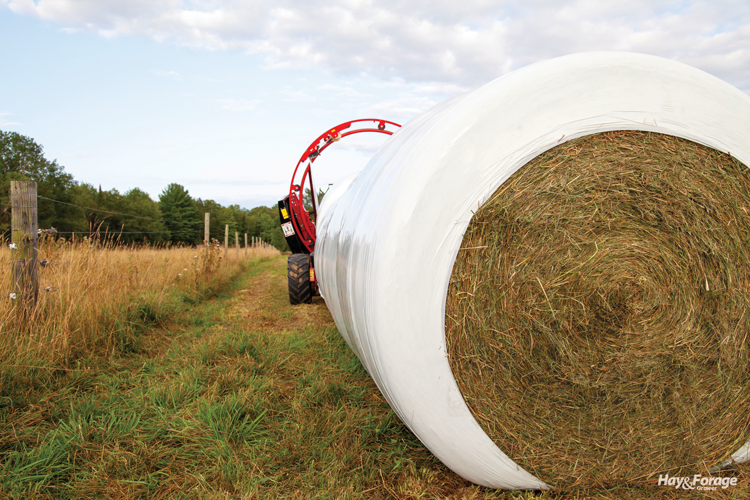The author is a managing partner in Elite Ag LLC, Leesburg, Ga. He also is active in the family farm in Rutledge.

Feeding cattle all winter is why you have to love your job. It’s during this time of year that daylight hours and work hours don’t often jive, as many feeding duties require artificial lighting. Still, as we get into colder weather, there is a little more time spent indoors where we can look back at the previous growing season and evaluate the pluses and minuses.
If you are like me, you want to make sure that the time spent hauling feed is not wasted and what is hauled doesn’t get wasted by the cattle. This is one of the reasons we added baleage to our operation over 20 years ago. I know this is not a new concept, but each year I have the same conversation with a rancher wanting to try it for the first time. So, in this column, I want to break down the three main options we have when it comes to wrapping hay. These are individual wrappers, inline wrappers, and baler-wrapper combinations.
Individual bale wrappers definitely got the slowest start here in the U.S., although they are by far the most widely used worldwide. Individual wrappers offer great versatility, and you can get started wrapping hay for the least amount of money. You can also keep it simple with a stationary unit that is relatively inexpensive but still gets the job done.
If you need more production from an individual bale wrapper, there are now self-loading units with automation for loading, wrapping, and unloading the bales. The main point besides the cost related to these upgrades is the fact that you can be flexible when moving bales. You do not need as many people on day one to get baleage wrapped in plastic, and you have a day or so to get them moved to your storage point. Bales can be hauled again, if needed, after they finish fermenting. This type of bale wrapper is definitely the way to go if you are selling bales to an end user.
Less plastic, more hauling
Inline wrappers took off and became the most popular in the U.S. mainly due to the amount of area we have to stack bales. There are lots of cases in Europe where livestock are kept in buildings over the winter, and farmers do not have the area available for long rows of baleage. Stacking individual bales in pyramids with telehandlers is the more common practice. At my farm, we have 2 miles of road frontage that we could make one long row, so an inline wrapper fit our operation just fine. Since we were the first in our area to wrap hay, and we had an inline wrapper, that’s what the next two or three farmers bought as well.
It takes quite a bit more work on the day you are baling with an inline wrapper. You have to haul the bales to where you are going to wrap and feed them. Or, if you place the bales at the edge of the field, you have to haul them when you get ready to feed in the winter. Either way, the hauling issue is not as flexible as it is with the individual bales.
You can save some plastic with inline wrappers. Usually, it’s around $2 to $2.50 per bale less in plastic cost when the two types of wrappers are compared, but the inline wrapper is around $20,000 more expensive. That is usually is a major consideration when it comes to which type might be the best option once all of the details are known about each product.
Less labor needed
The least purchased option to wrap bales is the baler-wrapper combo. It’s much more popular overseas than in the U.S. Why would someone spend $120,000 on a baler and wrapper in one unit? Reducing labor is the chief reason because one person can do both all the baling and wrapping.
A new silage baler with knives costs around $70,000, and stand-alone wrappers are from $35,000 to $60,000. So, when you add in the tractor to pull the individual bale wrapper and/or the person to load an inline unit, the price difference doesn’t seem so outlandish. For dry hay, you can simply turn off the wrapper and have an accumulator that can dump two bales together, which makes hauling out of the field easier. The baler-wrapper combination unit has a lot of electronics and hydraulics that are usually self-contained on the baler. You must be a good operator to use one of these machines efficiently, but they can certainly save you some money when it comes to labor cost.
The bottom line is that you can’t go wrong with any of the three bale-wrapping options. As you consider a new bale wrapper, just remember that what might be a good choice for your neighbor may not be the best one for your farm. I hope everyone had a joyous holiday season.
This article appeared in the January 2025 issue of Hay & Forage Grower on page 27.
Not a subscriber? Click to get the print magazine.

